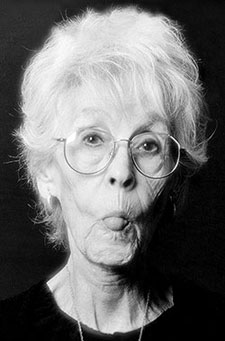
By Matt Windsor • Interviews and Photography by Melissa Springer
 Walking along the sidewalk outside his office one day, geriatrician Richard Allman, M.D., received some unsolicited advice: "This shouldn't be the Center for Aging," a colleague declared. "It should be the Center Against Aging." Allman, the center's director, declined to take the suggestion. But it is just one more indication, he says, of our rejection of the notion of growing old with grace.
Walking along the sidewalk outside his office one day, geriatrician Richard Allman, M.D., received some unsolicited advice: "This shouldn't be the Center for Aging," a colleague declared. "It should be the Center Against Aging." Allman, the center's director, declined to take the suggestion. But it is just one more indication, he says, of our rejection of the notion of growing old with grace.
"There's a bias in our society against aging," Allman says. "People don't want to talk about it. People in their 70s and 80s will look at assisted-living facilities and say, ‘I don't want to go there—those are old people in there!'"
Yet despite our resistance—and despite some intriguing hints—there is little reason to believe the aging process will be stopped anytime soon. Like it or not, there's an old person inside each one of us. And barring an early exit from this planet, that person will come out one day and start asking for help.
A Thousand Points of Confusion
By the time the 80s roll around on our internal odometers, almost every part of our anatomical machinery is running past its warranty. "We're already challenged by the fact that 12 percent of our population accounts for 30 percent of health-care expenditures and 50 percent of hospital days," says Allman. "By the year 2030, the estimate is that 20 percent of our population will be over the age of 65, and the fastest-growing segment is those over 85."
A "tidal wave" of patients is headed toward American hospitals, Allman says. Doctors will have more work to do—and it will be harder work, too. Geriatric patients "have multiple chronic problems," says Allman. "Something like 20 percent of people over the age of 65 have five or more chronic conditions, and they account for a huge proportion of the Medicare budget."
(Story continues beneath the slideshow)
Witness the power of art over alzheimer's disease in this slideshow from UAB Magazine on Vimeo.
Geriatricians like Allman have to unravel these knotty strands of symptoms, solving diagnostic puzzles every bit as challenging as the ones on medical thrillers such as House M.D. But their cases are not so neatly tied up, and they come tinged with the bitter taste of real-life tragedy that rarely makes it through the television screen.
Whereas a middle-aged patient with high blood pressure poses few challenges, explains Allman, "if you see an 85-year-old with high blood pressure, diabetes, pulmonary disease, and a memory disorder, plus incontinence and falling down, and her husband, her two daughters, and her son all come to the clinic room with her 15 different medicines, and they're in a crisis trying to decide whether or not she needs to go into a nursing home—that's a whole different kind of dilemma."
No Quick Fix
It's the kind of dilemma that may not have a good answer; certainly not one that can be produced by a million-dollar machine or sophisticated new procedure. And the type of doctor who succeeds in geriatric medicine—a creative thinker and people person, someone content to help rather than fix—is willing to accept that.
Web Extra:Article Sections: |
"Most of the conditions we treat are chronic—they won't be cured," says behavioral psychologist Kathryn Burgio, Ph.D., director of UAB's Continence Program. "If you can get over the idea that you have to cure anything that you touch and can take joy in improving quality of life, then this is a really wonderful profession to be in."
For geriatricians, the "primary outcome is function," Allman says. "How can we intervene medically, socially, and in other ways to optimize a person's ability to function independently in their community? We're taking what we know from basic science and clinical research and figuring out how to apply it to the real-world problems that older adults are facing."
UAB's practical approach is yielding results that could restore both bodies and minds. Read on for a series of reports from the front lines of aging.